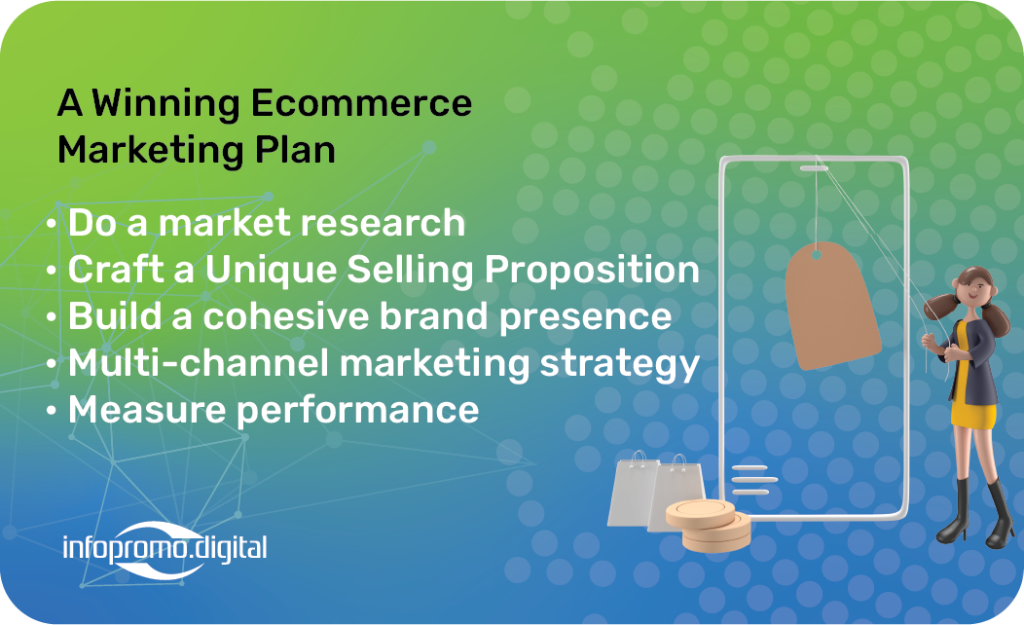
In today’s competitive digital landscape, a well-crafted marketing plan is essential for the success of any ecommerce business. Whether you’re launching a new venture or looking to boost your current sales, a comprehensive marketing strategy can drive growth and maximize your online presence. This step-by-step guide outlines key strategies and actionable insights to help you develop a winning ecommerce marketing plan.

Understanding Your Market
Before diving into marketing tactics, it’s crucial to conduct thorough market research. Identify your target audience, their demographics, behaviors, and preferences. Utilize tools like Google Trends, Keyword Planner, and social media analytics to gain valuable insights into consumer interests and trends.
Crafting Your Unique Selling Proposition (USP)
Differentiate your ecommerce store by defining a compelling Unique Selling Proposition (USP). Highlight what sets your products apart from competitors—whether it’s superior quality, unique features, or exceptional customer service. Your USP forms the foundation of your brand identity and influences all marketing efforts.
Building a Strong Brand Presence
Establish a cohesive brand identity across all channels—from your website design and logo to your social media profiles and email campaigns. Consistent branding enhances brand recognition and fosters trust among customers. Leverage storytelling techniques to connect emotionally with your audience and showcase your brand’s values.
Developing a Multi-channel Marketing Strategy
Diversify your marketing channels to reach a wider audience and drive traffic to your ecommerce site. Incorporate a mix of SEO (Search Engine Optimization), PPC (Pay-Per-Click) advertising, social media marketing, content marketing, and email campaigns. Tailor your approach based on platform-specific best practices and consumer behavior.

Optimizing for Conversion and Retention
Focus on converting site visitors into paying customers and retaining them for repeat purchases. Optimize your website for speed, usability, and mobile responsiveness to provide a seamless shopping experience. Implement persuasive calls-to-action (CTAs), customer reviews, and personalized recommendations to encourage conversions.
Measuring Success and Iterating
Monitor the performance of your marketing campaigns using analytics tools such as Google Analytics and ecommerce platform insights. Track key metrics like conversion rates, traffic sources, and customer acquisition costs (CAC). Use data-driven insights to refine your strategies, capitalize on successful tactics, and adapt to market changes.
Conclusion
A well-executed ecommerce marketing plan is a dynamic roadmap that evolves with your business and market trends. By understanding your audience, crafting a compelling brand story, and leveraging diverse marketing channels, you can effectively position your ecommerce business for sustained growth and profitability.




